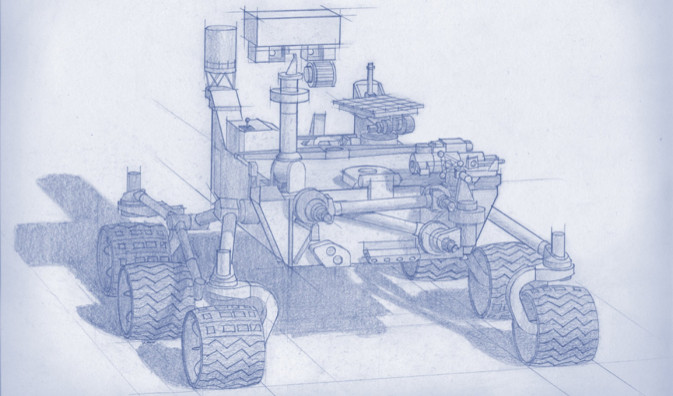NASA's Next Mars 2020 Rover To Search For Past Life On The Red Planet

NASA’s Mars rover Curiosity has made plenty of headlines since touching down on the Red Planet last August, but the U.S. space agency already has plans for a bigger and better Mars rover to replace Curiosity in 2020.
On Tuesday, NASA announced its Mars 2020 project, which aims to send an updated rover to Mars in that year. The rover will use a host of new, high-tech scientific instruments to closer determine if Mars was ever home to microbial life.
Mars 2020 has two main goals: scan the Martian surface for signs of possible past life and collect samples that will later be sent back to Earth for further analysis. It’s that last mission statement that truly separates NASA’s next-generation rover from previous ones. Mars rovers like Curiosity and Opportunity are equipped with tools to study Martian geology and beam back results, but by directly sending samples back to Earth, NASA scientists will have a much wider range of ways to study the samples. While the Mars 2020 rover does not have the ability to send back the samples itself, it will store a selection of samples to be collected later by a future, possibly manned, mission to Mars.
"The SDT-preferred mission concept employs new in situ scientific instrumentation in order to seek signs of past life (had it been there), select and store a compelling suite of samples in a returnable cache and demonstrate technology for future robotic and human exploration of Mars," states the report. "The measurements needed to explore a site on Mars to interpret ancient habitability and the potential for preserved biosignatures are identical to those needed to select and cache samples for future return to Earth. The Science Definition Team is proposing the rover collect and package as many as 31 samples of rock cores and soil for a later mission to bring back for more definitive analysis in laboratories on Earth."
Of course, there’s no hard evidence proving that life ever existed on Mars, but research from Curiosity suggests that the planet was likely covered in water at some point, and that water may have hosted small, microbial life at one point in the planet’s history. In accordance with this data, the Mars 2020 rover will come equipped with a new host of “visual, mineralogical and chemical” instruments designed to analyze the surface of Mars on a microbial level.
"The Mars 2020 mission concept does not presume that life ever existed on Mars," Jack Mustard, chairman of the Science Definition Team and a professor at the Geological Sciences at Brown University in Providence, R.I., said in a statement. "However, given the recent Curiosity findings, past Martian life seems possible, and we should begin the difficult endeavor of seeking the signs of life. No matter what we learn, we would make significant progress in understanding the circumstances of early life existing on Earth and the possibilities of extraterrestrial life."
Despite an updated host of scientific instruments, Mars 2020 will still bear plenty of similarities to NASA’s current rover, Curiosity. According to NASA, the new scientific equipment “will be placed on a rover similar to Curiosity,” and placed on the Martian surface using the same skyhook technology that allowed Curiosity to land on Mars last year.
"The Mars 2020 mission will provide a unique capability to address the major questions of habitability and life in the solar system," said Jim Green, director of NASA's Planetary Science Division in Washington. "This mission represents a major step towards creating high-value sampling and interrogation methods, as part of a broader strategy for sample returns by planetary missions."
© Copyright IBTimes 2024. All rights reserved.





















